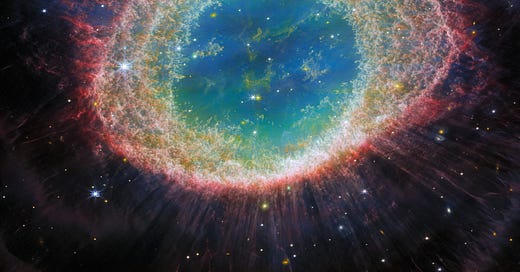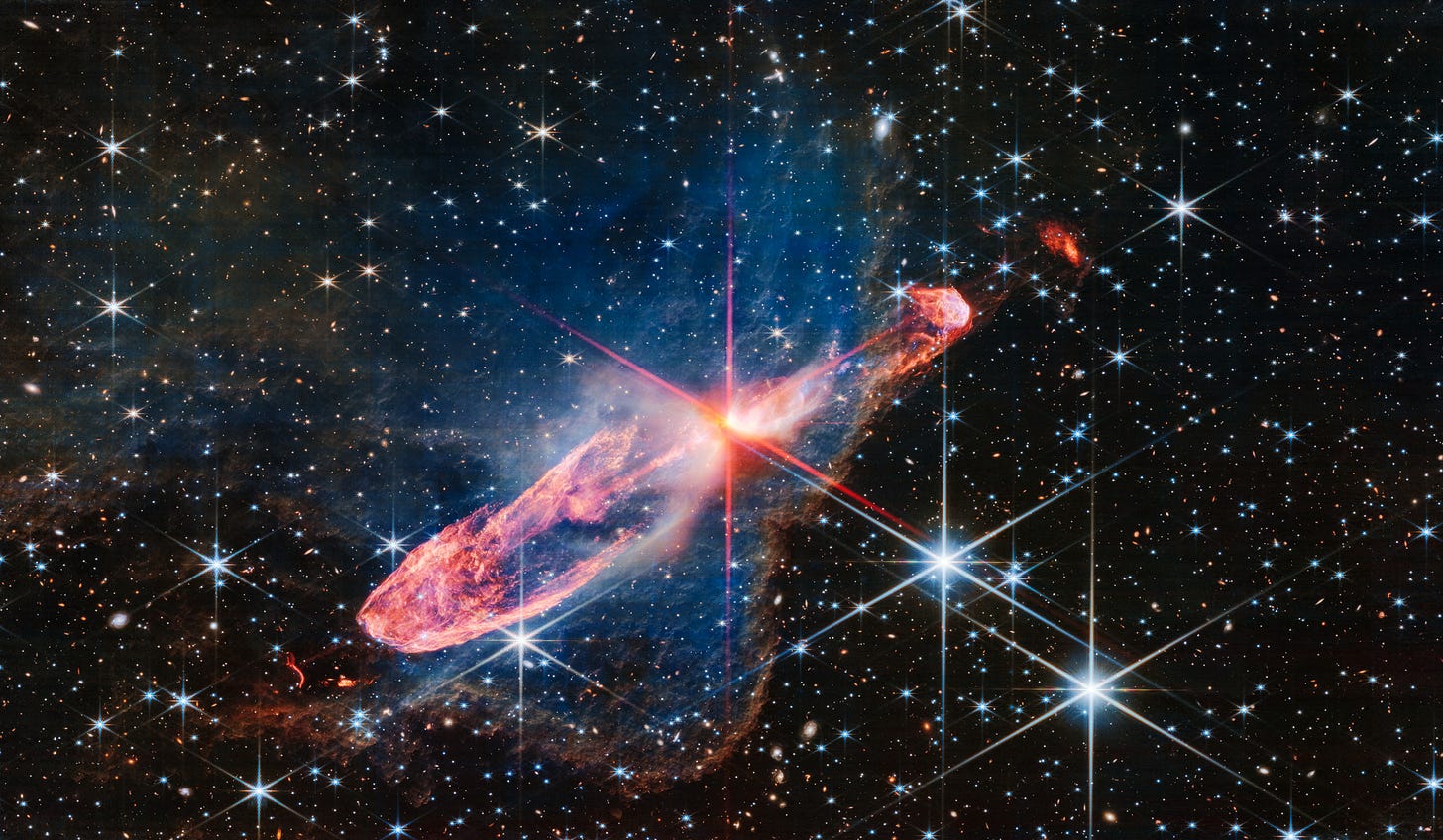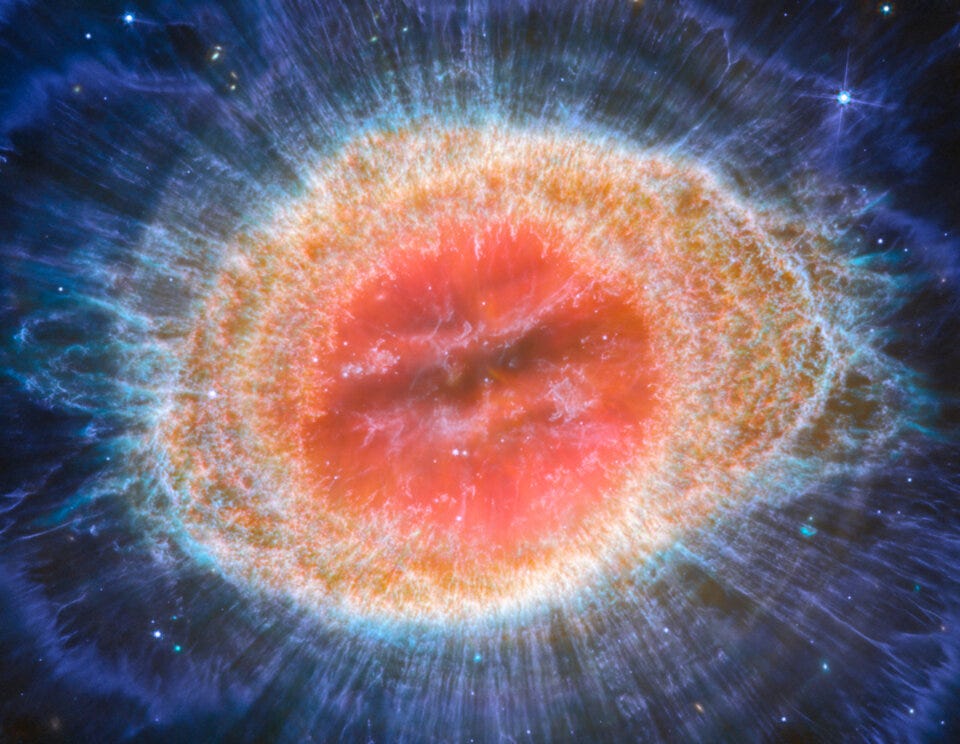Kosmosest #14: Your Space Briefing (July-Aug.)
Kosmosest is back to bring you a selection of latest in our space technology feats and views into the universe.
India’s Chandrayaan-3 mission becomes 1st probe to land near lunar south pole
The Chandrayaan-3 mission has made India the fourth country to land on the Moon, and the first to land on the lunar south pole. The landing took place at 8:33 am ET on August 23, marking a significant milestone for India's space program and the Indian Space Research Organisation (ISRO).
Footage from Chandrayaan-3/ISRO before landing took place:
The mission involves a solar-powered rover named Pragyan, which translates to "wisdom" in Sanskrit, set to disembark from Chandrayaan-3's Vikram lander. Together, the robotic duo will engage in scientific exploration for approximately one lunar day, equivalent to about 14 Earth days. Their mission includes the collection of data about the Moon's composition and characteristics.
Chandrayaan-3's journey commenced on July 14, when the spacecraft was launched atop an LVM3 rocket from Sriharikota, a spaceport on India's east coast. It entered an elliptical orbit around the Moon and subsequently underwent multiple maneuvers to transition into a nearly circular path, positioning it approximately 150 kilometers (93 miles) above the lunar surface.
The successful landing and upcoming scientific exploration are anticipated to yield valuable insights. The lunar south pole is believed to hold substantial deposits of water ice, a resource that could be used as rocket fuel and for sustaining future crewed missions.
Latest from JWST
Herbig-Haro 46/47
A pair of vigorously emerging stars, known as Herbig-Haro 46/47, is seen below in this view released on Jul 26 by the NASA/ESA/CSA James Webb Space Telescope channels. Herbig-Haro 46/47 is a mere few thousand years old in the stark contrast to the million-year-long journey star systems undertake to find their form. Peering into targets like this offers researchers a glimpse into the formation story of stars and planetary systems.
The Ring Nebula
The NASA/ESA/CSA James Webb Space Telescope has observed the well-known Ring Nebula with unprecedented detail. Formed by a star throwing off its outer layers as it runs out of fuel, the Ring Nebula is an archetypal planetary nebula. The object is also known as M57 and NGC 6720, and is relatively close to Earth at roughly 2,500 light-years away.
The new images provide unprecedented spatial resolution and spectral sensitivity, which also reveal unique details across both infrared observations. For example, the new image from NIRCam (Near-InfraRed Camera) shows the intricate details of the filament structure of the inner ring, while the new image from MIRI (Mid-InfraRed Instrument) reveals particular details in the concentric features in the outer regions of the nebulae’s ring.
—via esa.int
You can continue reading at https://www.esa.int/Science_Exploration/Space_Science/Webb/Webb_captures_detailed_beauty_of_Ring_Nebula
The colors of Earendel, the most distant star ever detected
(follow up on the Hubble Space Telescope’s observations)
The JWST builds upon Hubble's insights, reaching into the cosmos to spot the most distant star ever glimpsed—a luminous giant called Earendel. This star shines from the Sunrise Arc galaxy, a billion years after the Big Bang. The detection is enabled by gravitational lensing, a cosmic effect produced by the mammoth galaxy cluster WHL0137-08, which bends the light from the star.
Astronomers are analyzing data from the NIRSpec (Near-Infrared Spectrograph) instrument observations of the Sunrise Arc galaxy and Earendel in order to provide precise composition and distance measurements for the galaxy.
Thanks for reading! Catch the second part of the space briefing on Sunday.
Although the Perseid meteor shower peak has passed, there’s still a chance to catch the shooting stars even in late August. Wishing you clear skies!
—MLA







